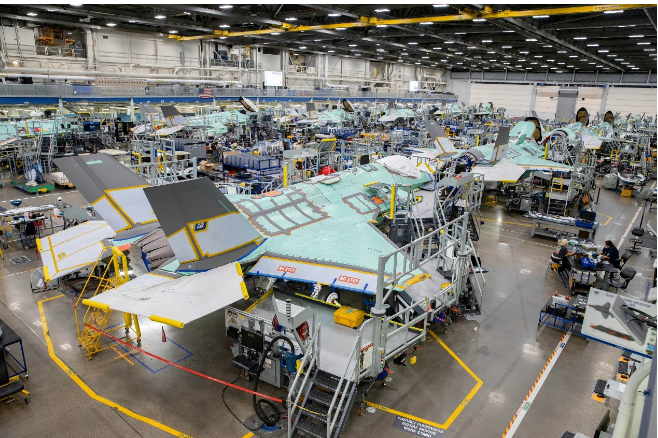The Secret Code of Strength: Analysis of the Digital Transformation of China's Defense Industry
- Gabriele Iuvinale

- 25 set 2025
- Tempo di lettura: 5 min
China is undertaking a profound digital transformation of its defense industry. According to analyses of specialized publications, this initiative is defined as the creation of "new quality combat power" (新质战斗力). The strategic goal is to integrate emerging technologies like artificial intelligence (AI), cloud computing, big data, and the Internet of Things (IoT) into every phase of the military lifecycle, from research and development to production and logistical support. The ambition is to overcome "technological choke points" (技术瓶颈) and system fragmentation, redesigning the entire industrial ecosystem. The strategy is centralized and coordinated, involving the National Administration for Science, Technology and Industry for National Defense (SASTIND) (国家国防科技工业局) and key state-owned corporations.

Architecture and Implementation Mechanisms
The digitalization of China's defense industry is based on a solid strategic architecture. The importance of a "roadmap" (施工图) to guide the transformation is emphasized, an approach that aims to overcome the fragmentation of information systems and the poor data sharing that have plagued the sector for decades.
The "Digital Twin" Framework and the Evolution of Control Systems
The concept of the "digital twin" (数字孪生), a virtual replica of a physical object or system, is at the core of the digitalization strategy. This approach, whose origins trace back to NASA's "Apollo Project," is being adapted for the production of complex military equipment. The intent is to establish a real-time connection between the physical world and its virtual replica, thereby solving critical problems like a lack of process visibility and delays in quality control.
The "digital twin"-based production management model is structured on three distinct but interconnected levels:
Equipment level (设备级). This level provides basic services such as equipment status monitoring and intelligent assembly validation.
Production line level (产线级). This offers higher-level services like production planning and quality control.
Workshop level (车间级). This manages planning, intelligent inspection, and performance analysis, optimizing the entire operation.
Publications provide concrete examples of the "digital twin's" application, such as in the management of complex electronic equipment production (复杂电子装备生产管控). The use of this technology has reduced rework caused by assembly errors by 90% through intelligent process verification.

Model-Based Systems Engineering and ABMS Integration
Another technological pillar is Model-Based Systems Engineering (MBSE), used to manage the increasing complexity of aerospace software. A key technical path for aerospace software innovation integrates Artificial Intelligence (人工智能), Blockchain (区块链)—a distributed and immutable digital ledger that ensures the security and traceability of information—and Model-Based Systems Engineering (基于模型的系统工程) into a unified system called ABMS, an integration of these three key technologies. This system aims to overcome technological fragmentation and create a complete innovation chain, from basic research to industrial application.
Organizational Entities and Governance Mechanisms
The digitalization strategy is guided by a close collaboration among ministries, agencies, and state-owned corporations, reflecting the model of civil-military fusion (军民融合). The central role is played by:
The National Administration for Science, Technology and Industry for National Defense (SASTIND) (国家国防科技工业局): This government body is the primary oversight organization.
State-owned Corporations: China Aerospace Science and Technology Corporation (CASC) (中国航天科技集团有限公司) and China Aerospace Science and Industry Corporation (CASIC) (中国航天科工集团有限公司) are the main drivers of the transformation. CASC has presented its aerospace software innovation plan.
Alliances and Collaborations: China is promoting a model of "reorganization of excellences and union of strengths" (优优重组,强强联合), supported by alliances like the Aerospace Software Development Alliance (航天软件发展联盟), which unites research institutes, universities, and companies to share resources and accelerate innovation.
Progress and Strategic Goals of the Chinese Space Program
Publications provide a detailed update on the space program, a key sector for digitalization and technological superiority.
"Space Day of China" 2025: The main event, held in Shanghai, celebrated the tenth anniversary of this observance. It was announced that China will host the International Conference on Climate Change Science (国际气候变化科学会议).
Lunar and Interplanetary Missions: Articles report on the progress of lunar missions, including the Chang'e-6 (嫦娥六号) mission, which returned the first lunar samples from the far side of the Moon. The Tianwen-2 (天问二号) mission, intended to study asteroids, is also mentioned.
Space Computing Satellite Constellation: Publications mention the successful launch of the world's first space computing satellite constellation (全球首个太空计算卫星星座), consisting of 12 satellites. This initiative, with its integrated computing and inter-satellite communication capabilities, represents a significant step toward an autonomous and resilient space ecosystem.
Detailed Analysis of Internal Vulnerabilities and Chinese Policies
The publications, with a transparent approach, describe the challenges the country faces, offering critical insights for analysis.
The Talent Gap. An analysis of specialized publications highlights the "shortage of qualified talents" (人才匮乏) as a major challenge. China is striving to cultivate "composite talents" (复合型人才) with both technical and managerial skills, through cooperation among industry, universities, and research institutes, such as Nanjing University of Aeronautics and Astronautics (南京航空航天大学).
Technological Dependence. Publications indicate that the digitalization of the industry largely depends on foreign hardware and software. China is facing "technological choke points" in critical areas like advanced semiconductors, industrial design and production software (such as CAD, CAM, CAE), and operating systems.
Data Silos and Cybersecurity. The publications acknowledge that the defense industry still suffers from "information barriers" (信息壁垒) and "data silos" (数据孤岛). Digitalization, by exposing the industry to a wide range of cyber risks, requires a constant strengthening of security measures.
Strategic Context and Additional Developments: A Look at the Future and the Past
The analyzed publications offer valuable insights into the broader context of China's defense digitalization.
The Role of Talent. The Example of Ma Jing: An article highlights the importance of the human factor through the portrait of figures like Ma Jing (马敬), an engineer who led a team of over 100 people on a critical project. His story underscores the importance of leadership and dedication in overcoming the "hard bones" (硬骨头) of technical research, a crucial aspect of digitalization's success.
Events and Technology Fairs. Another publication mentions the "World Radar Expo" (世界雷达博览会) held in Hefei, an event that saw the participation of over 600 companies. This participation highlights China's desire to showcase its technological capabilities and gain knowledge of global advancements, even in key areas for military digitalization.
Stories of Tradition and Revolution. Space is dedicated to historical topics, such as the stories of factories like the "Caihua Cave" (菜花洞) and the "Liu Bocheng Factory" (刘伯承工厂), highlighting the deep connection between current modernization and revolutionary tradition.
Analysis of Foreign Progress. Specialized Chinese publications dedicate an in-depth section to analyzing the digital transformation of the US defense sector, citing initiatives like Lockheed Martin's "ILMX" program and Raytheon's "factory as a data source" (工厂即数据源) strategy. This demonstrates a continuous analysis of foreign progress to adapt their own strategies.
Naval Production and Strategic Projects. The launch of the second large Chinese-built cruise ship (国产大型邮轮) is mentioned, a result that highlights progress in the shipbuilding sector. Foreign strategic projects are also cited, such as Turkey's program to build nuclear-powered submarines (核动力潜艇) and Russia's research for a nuclear power plant for the future lunar research station (月球科考站).




Commenti